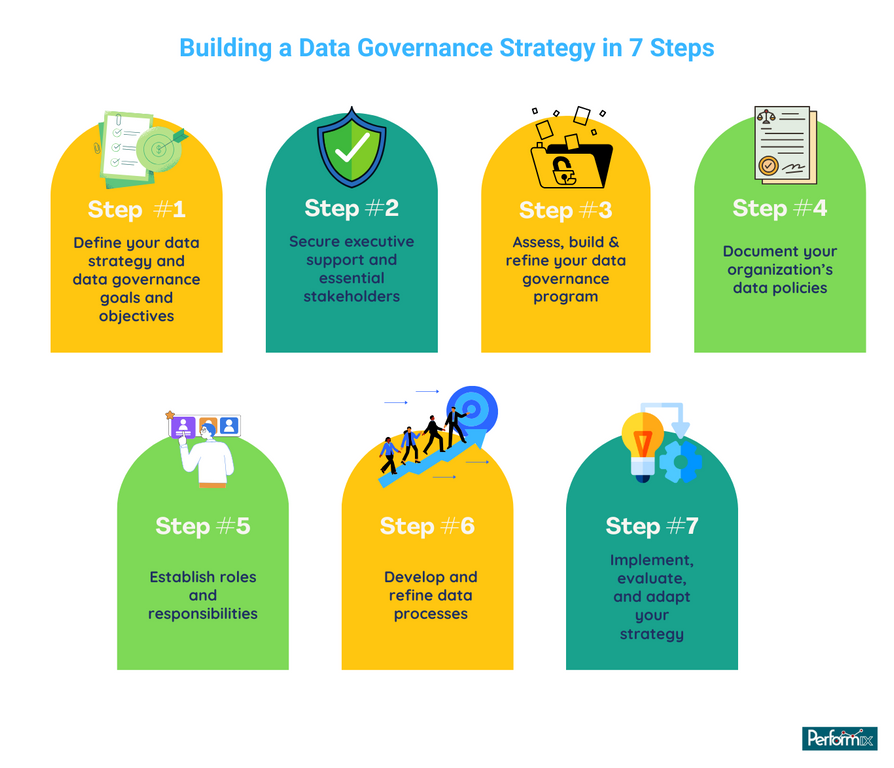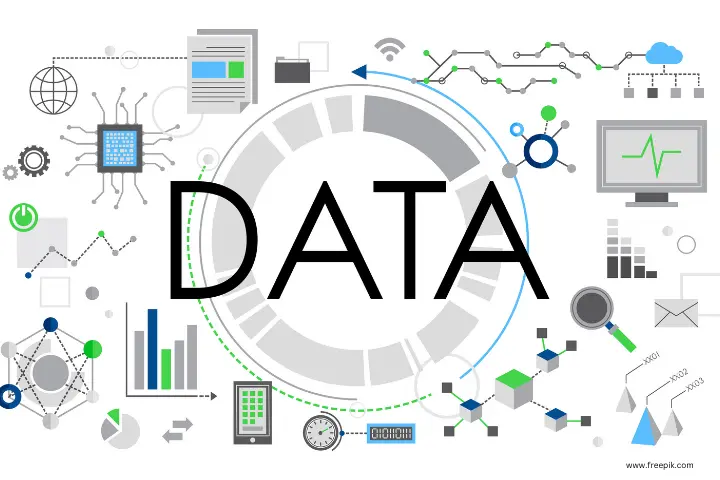In the dynamic landscape of today’s business world, data is often hailed as the new oil. However, the real value lies in the sheer volume of data and the insights it can provide. This is where analytics comes into play, transforming raw data into actionable intelligence. But to truly unlock the impact of analytics, organizations need a sturdy foundation – and that foundation is data governance.
Understanding Data Governance: The Cornerstone of Analytics
Data governance refers to the practices, policies, and frameworks that ensure high data quality, security, and compliance throughout its lifecycle. It provides the rules of engagement for how data is collected, stored, processed, and shared within an organization. While it might seem like a bureaucratic hurdle, effective data governance is the linchpin that makes analytics not just possible but impactful.
Quality Assurance for Reliable Insights
At the heart of analytics lies the quest for insights. However, the reliability of these insights is directly proportional to the quality of the underlying data. Data governance sets the stage for data quality assurance by defining and enforcing standards. It ensures that the data used for analytics is accurate, consistent, and trustworthy. In a world where decisions are increasingly data-driven, this reliability is non-negotiable.
Consistency: A Key Ingredient for Success
Imagine analyzing sales data when every department logs transactions differently. Chaos would ensue, and meaningful insights would be elusive—data governance steps in to establish consistency and standardization. By setting data standards and ensuring that they are adhered to across the organization, governance creates a common language for analytics. This standardization is the bedrock upon which reliable insights are built.
Balancing Access and Security
Analytics is a powerful tool, but with great power comes great responsibility. Data governance helps balance providing access to data for analysis and ensuring its security by defining who has access to what data and under what circumstances; organizations can prevent unauthorized use and protect sensitive information. This not only safeguards the organization but also builds trust among stakeholders.
Collaborative Ecosystem
Analytics is not the exclusive domain of data scientists. It involves collaboration among various teams within an organization. Data governance facilitates this collaboration by providing data usage, sharing, and communication guidelines. When analysts, data scientists, and business users can work together seamlessly, the impact of analytics multiplies.

Tracing the Origins: Data Lineage
Understanding where your data comes from and how it transforms is critical for analytics. Data governance ensures transparency through data lineage and traceability. This documentation of the origin and transformations of data provides insights into its reliability and helps debug any issues that arise during analysis.
Mitigating Risks in Decision-Making
Analytics often guides decision-making at the highest levels of an organization. In such scenarios, managing risks associated with data becomes paramount. Data governance helps identify and mitigate these risks, ensuring that decision-makers are well-informed about potential pitfalls and uncertainties in the data. This risk management is essential for steering the organization in the right direction.
Holistic Data Lifecycle Management
Data doesn’t have a finite existence; it goes through a lifecycle from creation to deletion. Effective data governance manages this entire lifecycle. It ensures that the data used for analytics is accurate and up-to-date. This lifecycle management is crucial for keeping analytics relevant in a constantly evolving business landscape.
Aligning Analytics with Business Goals
Analytics needs to be aligned with the organization’s strategic objectives to make a real impact. Data governance ensures this alignment by providing the framework for analytics efforts. When analytics is directed toward addressing critical business challenges and opportunities, its effect becomes tangible, contributing directly to the organization’s success.
Building Trust, Enhancing Impact
Trust is the currency of analytics. The impact will be severely limited if stakeholders don’t trust the data or the analytics process. Data governance is the key to building and maintaining this trust. When there is confidence in the data’s quality, security, and reliability, stakeholders are likelier to trust the insights generated through analytics. This trust is the secret sauce that enhances the impact of analytics.

Real-World Applications of Data Governance Across Industries
Let’s delve into specific use cases to illustrate how companies have achieved notable successes through the implementation of data governance:
1. Financial Services: JPMorgan Chase
Use Case: JPMorgan Chase, one of the largest financial institutions globally, implemented robust data governance to enhance data quality, security, and compliance. They focused on aligning data management practices with regulatory requirements, ensuring accurate financial reporting, and improving decision-making processes.
Results: Implementing data governance at JPMorgan Chase contributed to better risk management, increased regulatory compliance, and enhanced customer trust through secure and reliable financial services.
2. Healthcare: Mayo Clinic
Use Case: Mayo Clinic, a renowned healthcare organization, leveraged data governance to address challenges related to patient data management. They implemented standardized data entry processes, defined data quality standards, and improved interoperability across various healthcare systems.
Results: Mayo Clinic experienced improved patient care with accurate and accessible medical records, streamlined clinical workflows, and better collaboration among healthcare professionals.
3. Retail: Walmart
Use Case: Walmart, a global retail giant, implemented data governance to optimize its supply chain operations. By standardizing data across its vast network of suppliers, distribution centers, and stores, Walmart enhanced inventory management, reduced stockouts, and improved overall supply chain efficiency.
Results: Implementing data governance at Walmart led to significant cost savings, improved product availability, and enhanced customer satisfaction through a more efficient supply chain.
4. Manufacturing: General Electric (GE)
Use Case: General Electric utilized data governance to address challenges in managing complex manufacturing processes. They implemented data quality checks, standardized data across production units, and established clear data ownership to improve operational efficiency.
Results: GE achieved improved quality control, reduced production errors, and optimized manufacturing processes, leading to increased productivity and cost savings.
5. Technology: IBM
Use Case: IBM, a global technology company, implemented data governance to address challenges in software development. They focused on version control, data consistency, and collaboration among development teams to streamline the software development lifecycle.
Results: Implementing data governance at IBM contributed to more efficient software development, reduced errors in code changes, and improved collaboration among software development teams.
6. Telecommunications: AT&T
Use Case: AT&T, a major telecommunications company, applied data governance to optimize network performance. They implemented standardized data metrics for monitoring network health, established clear data ownership, and improved data consistency in network management.
Results: AT&T experienced reduced network disruptions, enhanced service reliability, and improved customer satisfaction through better-managed telecommunications networks.
These examples showcase how data governance is not industry-specific but is a versatile and essential practice across diverse sectors for improving data quality, ensuring compliance, and driving operational excellence.
Empowering Analytics for Future Success
In a world drowning in data, analytics is the lifeboat that helps organizations navigate to success. However, this lifeboat’s efficacy is contingent on its anchor’s strength, and that anchor is data governance. By ensuring data quality, security, and alignment with business goals, data governance doesn’t just unlock the impact of analytics; it empowers organizations to harness the true potential of their data. As we navigate the complexities of the data-driven era, one thing is clear: the impact of analytics is not a solo act; it’s a symphony orchestrated by effective data governance.
In the ever-evolving landscape of U.S.-based data analytics, Performix stands as a pivotal force, transcending its role as a software company to become a transformative catalyst. With an unwavering commitment to robust data governance, Performix has redefined the narrative surrounding analytics, transforming it from a mere tool for insights into a powerful driver of informed decision-making. Through specialized data analytics services, Performix ensures precision, reliability, and consistency, solidifying its position as a trusted partner in navigating the complex terrain of data-driven solutions in the United States.






